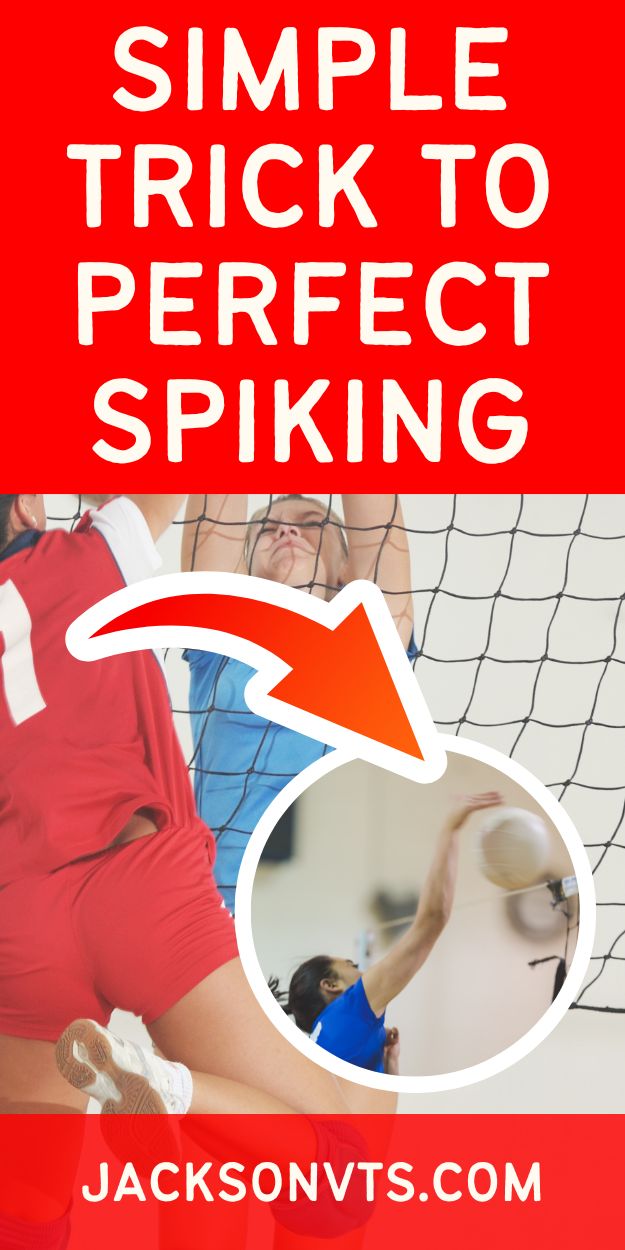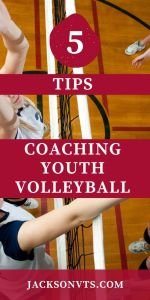How to Hit a Volleyball
7 Common Mistakes
Do you know how to hit a volleyball? On this page I discuss how to spike a volleyball correctly and the common mistakes you want to avoid when hitting.
7 Steps to Learning How to Hit a Volleyball
Here are the 7 steps to learning to hit a volleyball.
- Ball Contact. The first thing to do is learn the correct way to contact the ball. You need to get a feel of what it's like to contact correctly. Practice making the ball spin. Hit the ball on your hand in such a way that the ball spins. When you hit a volleyball, the goal is to hit topspin. You create topspin by wrapping your hand over the ball as you make contact. Focus on finishing the movement with the fingers pointed downward.
- Take an approach. The second most important thing to do is learn to approach to hit. The approach is important because this is how you get into the correct position to hit. If you can't get in position, then you can't hit.
- Learn the footwork. If you are right handed, the steps are left-right-left. If you are left-handed, then the steps are right-left-right. When first learning the footwork, it can be easier to just focus on the last two steps. Your last two must be correct. The total number of steps taken to the ball really doesn't matter. It's just the last two that matter. If you are right-handed, focus on finishing right-left. If you are left-handed, focus on finishing left-right.
- Learn the armswing. As you jump up to get into spiking position, bring both arms up in the air. The hitting hand comes back above the head. As you bring your hand forward to hit the ball, you want the arm to be in a vertical position. Avoid bending the elbow. It's a good idea to practice hitting the ball while in a vertical arm position. You want to get in the habit of having a vertical arm when contacting the ball.
- Bring it all together. Once you have learned what it's like to contact the ball correctly and have practiced your footwork and armswing, it's then time to put all the steps together. In the beginning you will likely get frustrated because you won't be good. Don't get frustrated. Just remember, hitting a volleyball is very technical and takes a lot of practice. If you have put in the time to get a feel of what it's like to contact the ball correctly, then when you first start to take an approach and attempt to hit, you will notice your mistakes. This is good because you will know what you need to correct.
- Practice the jump serve. Practicing the jump serve is good for learning how to hit a volleyball because it's much easier to toss the ball to yourself and hit. The jump serve is tossing the ball and taking an approach. Start by first tossing the ball, taking the approach then catching the ball. Once you get comfortable with this, you can advance to contacting the ball to create topspin.
- Practice hitting a ball that set from a teammate. The final thing to learn how to do is to hit a ball that's been set. A set ball is the hardest ball to hit because you must anticipate the ball being set. You need to read the setter and react to where the ball goes. For example, if the ball is set lower than expected, then you need to see the ball being set low and you must quickly get in position to hit. If the ball is set higher than expected, you must wait then go fast. Becoming good at reading and reacting the set takes a lot of practice. Since it takes a long time to become really good at anticipating, it's best to practicing anticipating as often as possible. This means any time you have a chance to be set a ball from a setter, you should take advantage of this opportunity to improve your anticipation skills.
If you found these tips helpful, save this image to your Pinterest board.
6 Hitting Mistakes to Avoid
Avoid these mistakes when first learning to hit a volleyball.
- Hitting the Ball Flat. You want to always create topspin on the ball when you hit. Topspin will allow you to control the ball. You want to hit the ball with control so you can place the ball into the court. When you hit topspin, the ball will cut straight through the air. The ball travels in a straight line to where you are trying to hit it. If you hit a floater when you spike, this will send the ball erratically and out of control.
- Not Approaching to the Ball. You always need to take an approach because the approach will help you get in position to hit. Positioning is critical for spiking. Taking an approach will also help you jump higher. Develop a consistent approach so you can get quickly to the ball and jump high to hit.
- Not Anticipating the Set. You need to watch the setter and know what set to expect. As the setter is moving to the ball, be anticipating what set is coming.
- Not Understanding the Setter Capabilities. You need to know your setter. Know what your setter is capable of doing. For example, what does the setter do when the ball is passed tight to the net? Does the setter send the ball tight when the ball is passed tight?
- Not Knowing Your Opponent. To be successful at hitting, you need to know what you're up against. Is there a big block? Are you up against a good defense? You need to know what to be prepared for. For example, if the block is big and take up a lot of space, you may need to focus on hitting the ball around the block. If the block is slow, you may try to run a faster offense to beat the block.
- Not Knowing Your Ability. You need to know what your ability is. For example, are you a smaller hitter that needs to run faster plays and rely on your speed? Are you a bigger hitter than likes the high set? Know your ability so you can be prepared to hit the way you need to.
If you found these tips helpful, save this image to your Pinterest board.
- Home
- Techniques
- How to Hit a Volleyball





